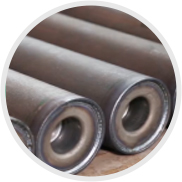 Afrikaans
Afrikaans  Albanian
Albanian  Amharic
Amharic  Arabic
Arabic  Armenian
Armenian  Azerbaijani
Azerbaijani  Basque
Basque  Belarusian
Belarusian  Bengali
Bengali  Bosnian
Bosnian  Bulgarian
Bulgarian  Catalan
Catalan  Cebuano
Cebuano  Corsican
Corsican  Croatian
Croatian  Czech
Czech  Danish
Danish  Dutch
Dutch  English
English  Esperanto
Esperanto  Estonian
Estonian  Finnish
Finnish  French
French  Frisian
Frisian  Galician
Galician  Georgian
Georgian  German
German  Greek
Greek  Gujarati
Gujarati  Haitian Creole
Haitian Creole  hausa
hausa  hawaiian
hawaiian  Hebrew
Hebrew  Hindi
Hindi  Miao
Miao  Hungarian
Hungarian  Icelandic
Icelandic  igbo
igbo  Indonesian
Indonesian  irish
irish  Italian
Italian  Japanese
Japanese  Javanese
Javanese  Kannada
Kannada  kazakh
kazakh  Khmer
Khmer  Rwandese
Rwandese  Korean
Korean  Kurdish
Kurdish  Kyrgyz
Kyrgyz  Lao
Lao  Latin
Latin  Latvian
Latvian  Lithuanian
Lithuanian  Luxembourgish
Luxembourgish  Macedonian
Macedonian  Malgashi
Malgashi  Malay
Malay  Malayalam
Malayalam  Maltese
Maltese  Maori
Maori  Marathi
Marathi  Mongolian
Mongolian  Myanmar
Myanmar  Nepali
Nepali  Norwegian
Norwegian  Norwegian
Norwegian  Occitan
Occitan  Pashto
Pashto  Persian
Persian  Polish
Polish  Portuguese
Portuguese  Punjabi
Punjabi  Romanian
Romanian  Russian
Russian  Samoan
Samoan  Scottish Gaelic
Scottish Gaelic  Serbian
Serbian  Sesotho
Sesotho  Shona
Shona  Sindhi
Sindhi  Sinhala
Sinhala  Slovak
Slovak  Slovenian
Slovenian  Somali
Somali  Spanish
Spanish  Sundanese
Sundanese  Swahili
Swahili  Swedish
Swedish  Tagalog
Tagalog  Tajik
Tajik  Tamil
Tamil  Tatar
Tatar  Telugu
Telugu  Thai
Thai  Turkish
Turkish  Turkmen
Turkmen  Ukrainian
Ukrainian  Urdu
Urdu  Uighur
Uighur  Uzbek
Uzbek  Vietnamese
Vietnamese  Welsh
Welsh  Bantu
Bantu  Yiddish
Yiddish  Yoruba
Yoruba  Zulu
Zulu roller conveyor components
Understanding Roller Conveyor Components
Roller conveyor systems are essential components in various industries, including manufacturing, distribution, and warehousing. These systems facilitate the efficient movement of materials and products, reducing manual handling and increasing productivity. The effectiveness of a roller conveyor largely depends on its components, which work together to ensure smooth and reliable operation.
1. Rollers The Core Component
The rollers are the most critical elements of any roller conveyor system. Typically made of materials such as steel, plastic, or aluminum, these cylindrical devices support the weight of the items being transported. They can be powered or gravity-fed. Powered rollers are driven by a motor, allowing for controlled movement of materials, while gravity rollers rely on the slope of the conveyor to facilitate movement. The design and material choice for rollers significantly influence the system's load capacity and wear resistance.
The frame of a roller conveyor provides the necessary support for the rollers and the entire system. Usually constructed from robust materials like steel or aluminum, it must be designed to withstand the operational conditions, such as load weight and environmental factors. A well-designed frame ensures the stability and longevity of the conveyor system, preventing misalignment and minimizing wear on the rollers. Modular frame designs allow for easy adjustments and expansions, catering to the changing needs of a facility.
3. Bearings and End Stops
roller conveyor components

Bearings are another essential component, positioned at each roller's end. They facilitate smooth rotation and minimize friction, contributing to efficient material movement. High-quality bearings can significantly extend the lifespan of the roller conveyor and reduce maintenance requirements. End stops are critical for preventing products from rolling off the conveyor at the terminal points. These stops can be adjustable or fixed, depending on the design of the conveyor system.
4. Drive Mechanisms
In powered roller conveyors, various drive mechanisms are employed to control roller movement. This includes belt drives, chain drives, and direct drives. Choosing the appropriate drive mechanism is crucial for ensuring the desired speed and control over the material flow. Belt drives are commonly used for lighter loads, while chain drives are preferable for heavier applications due to their durability and strength.
5. Controls and Sensors
Modern roller conveyor systems often incorporate advanced controls and sensors to enhance operational efficiency. These technologies can include speed controls, photoelectric sensors for object detection, and programmable logic controllers (PLCs) for automation. Implementing such features can lead to a more streamlined workflow, allowing for features like automated sorting and tracking of items throughout the conveyor system.
Conclusion
In summary, roller conveyor components play a vital role in the functionality and efficiency of material handling systems. From the core rollers and structured frames to bearings, drive mechanisms, and advanced control systems, each component must be carefully selected and maintained. Understanding these components enables engineers and operators to design and operate roller conveyor systems that meet the specific needs of their applications, ultimately enhancing productivity and operational efficiency in various industrial settings.
-
Revolutionizing Conveyor Reliability with Advanced Rubber Lagging PulleysNewsJul.22,2025
-
Powering Precision and Durability with Expert Manufacturers of Conveyor ComponentsNewsJul.22,2025
-
Optimizing Conveyor Systems with Advanced Conveyor AccessoriesNewsJul.22,2025
-
Maximize Conveyor Efficiency with Quality Conveyor Idler PulleysNewsJul.22,2025
-
Future-Proof Your Conveyor System with High-Performance Polyurethane RollerNewsJul.22,2025
-
Driving Efficiency Forward with Quality Idlers and RollersNewsJul.22,2025





























